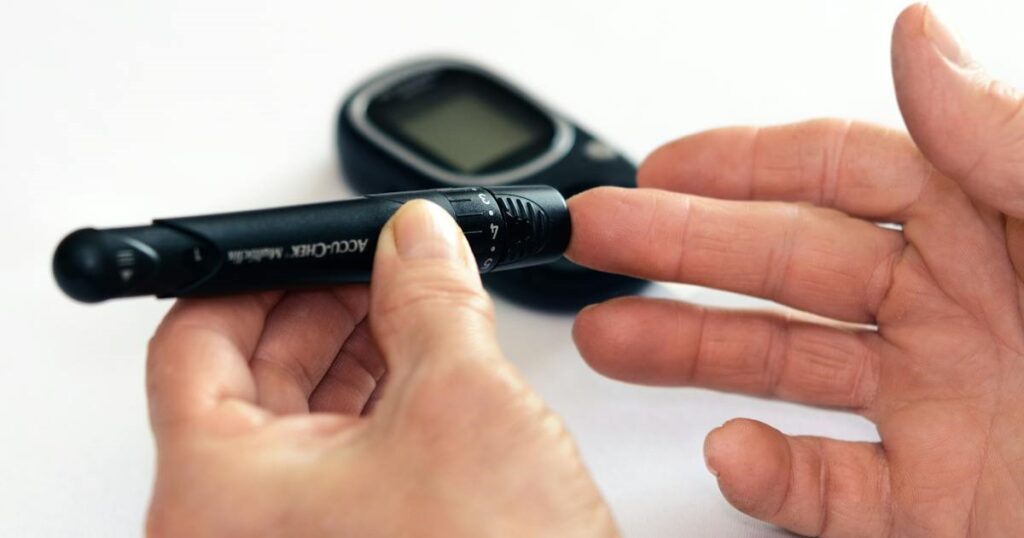
Teams from the Family Doctor Program (PMF) and other Primary Health Care (PHC) teams may diagnose, treat, and manage diabetes, including recurring consultations with a physician, nurse, and dentist. You may rely on specialists from the Family Health Support Center, including dietitians, physiotherapists, and occupational therapists, when rehabilitation is required.
The SUS provides patients diagnosed with diabetes with medications (tablets and injectable insulin) and supplies for controlling blood glucose levels (glucometers and strips). They can be collected in the Family Doctor Program modules and in regional polyclinics.
1. More common after age 40
The hallmarks of type 2 diabetes (DM2) include both an insufficiency in the body’s synthesis of insulin and insulin dysfunction. People over 40 who are overweight, inactive, and have poor eating habits are more likely to experience it. On the other hand, type 2 diagnoses among younger people have been rising.
2. There is a hereditary factor
Having family members with diabetes is a risk factor for developing DM2.
3. Warning signs
The classic symptoms of diabetes are increased thirst, urinary volume and unexplained weight loss, but they are not always present.
4. Excess sugar affects blood vessels
Diabetes can impair blood circulation and nerve function. Hyperglycemia, or too much glucose (sugar) in the blood, is a complication of poorly managed diabetes. Hyperglycemia mostly affects the kidneys, heart, brain, eyesight, and nerves in the feet by irritating the blood vessels.
5. The four pillars of treatment
Diabetes treatment involves healthy eating and physical activity, what we call lifestyle changes, in addition to blood glucose monitoring and self-care. Many cases of diabetes also require medication to reach a normal blood glucose level. The use of medicines (tablets) and injectable insulin, as well as the device that measures blood glucose using a drop of blood on the fingertip (glucometer), is guided by the PMF and polyclinic teams.
6. Cut calories and make good choices
Fad diets shouldn’t be the basis for dietary changes. The strategy is to consume less calories by eating more fruits and vegetables, increasing the amount of fiber and vegetables in general, consuming less fried foods and fats, and avoiding sugar (found in candies, soft drinks, and sweetened juices), pasta (found in pies, bread, and cakes), flour (found in bread, cookies, and cakes), and alcoholic beverages.
7. Scheduled meals make a difference
Diabetics must plan and control their meals. It is recommended to eat at least five meals a day, at scheduled times, and not go more than 3 hours without eating, in addition to choosing the appropriate foods and controlling their quantities.
8. Exercising is a holy medicine
Rehearsing actual work brings down glucose levels, diminishes the requirement for insulin and pills, lessens blood fat levels, forestalls coronary illness, controls circulatory strain and weight, as well as expanding prosperity and decreases pressure.
The fundamental activities suggested for diabetics are: strolling, running, swimming, cycling and moving. Besides, it is prescribed to integrate unconstrained proactive tasks into your daily schedule, like climbing steps and not utilizing the vehicle to travel brief distances.
9. Be careful with your feet
As the disease progresses, foot sensitivity may decrease. A burning and tingling sensation is common, which can progress to a complete loss of sensitivity. This facilitates the occurrence of injuries and infections that can lead to the loss of fingers and amputation of the foot.
Therefore, it is important for people with diabetes to look or ask someone to evaluate their feet daily (especially the soles and between the toes) in search of injuries. If you notice any injury or different stain, the patient should contact the PMF unit or the healthcare professional accompanying them.
Furthermore, it is important to be careful when cutting your nails, not removing cuticles or popping blisters, avoiding walking barefoot and protecting your feet with socks and comfortable shoes.
10. Don’t smoke and keep your vaccinations up to date
Other recommendations for diabetic patients are to have an ophthalmological evaluation once a year; keep the vaccination card updated; and don’t smoke. Try to find out in the PMF modules or in regional polyclinics about the treatments available in the SUS to control smoking, the recommended vaccines and the need for an eye exam.


